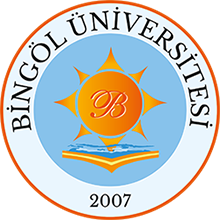The Effects of Varying Dietary Na/K Ratio and Electrolyte Balance of Diets on Growth, Blood Gases, Hematological Variables, Ionized Calcium and Carcass Traits in Broiler Chickens
Date
2011Author
Nursoy, Huseyin and Sogut, Bunyamin and Tasal, Turkan and Aldemir, Resit
and Kaplan, Oktay and Altacli, Selcuk
Metadata
Show full item recordAbstract
The effects of 12 different diets which regulated 0.1-0.7 mol Na/K ratio
and 176-422 mEq/kg Dietary Electrolyte Balance, DEB, (Na+K-Cl) were
investigated on growth, blood gases, hematological variables,
biochemical parameters and carcass traits in broiler chickens. Two-day
old Ross-308 male chicks (n=180) having individual thirty replicates for
6 groups were used and the study lasted 42 days in the experiment. The S
group diet was based on corn and soybean meal and 0.25\% salt. This
group diet was accomplished by adding 1-0.5\% NH4Cl as A1 and A2 of
anionic groups and 0.5-1-1.5\% NaHCO3 as C1, C2 and C3 of cationic
groups in starter and grower phases, respectively. Increasing Na/K and
DEB of the diets had no effect on live weight, body weight gain and feed
per gain in 0-42 days (P>0.05). Blood pH quantitatively increased in S,
C1 and C2 groups (P<0.05). A1, A2 and S groups of pO(2) levels were
higher than those of cationic groups (P<0.05), (R-2=0.59). The values of
HCO3-, HCO3std, TCO2, BEecf, Be(b), Hct and THbc were lower anionic
groups than cationic groups (P<0.05), (R-2=0.63-0.82). SO2c level was
the lowest in C1 group (P<0.05). Anion gaps of the broilers were
calculated as 7.97-20.84 mEq/l. Ionized calcium was quantitatively the
highest in A1 group. Hot carcass and abdominal fat were not affected by
the experimental diets with varying Na/K and DEB (P>0.05). Based on the
results of this study, anionic diet such as A1 or 0.1 of Na/K ratio and
212 mEq/kg of DEB could be fed for broilers in case of insufficient Ca.
In normal case, it is concluded that C1 and C2 of diets or 0.3-0.5 of
Na/K ratios and 259-344 mEq/kg of DEB were appropriate for broilers.
Collections

DSpace@BİNGÖL by Bingöl University Institutional Repository is licensed under a Creative Commons Attribution-NonCommercial-NoDerivs 4.0 Unported License..













